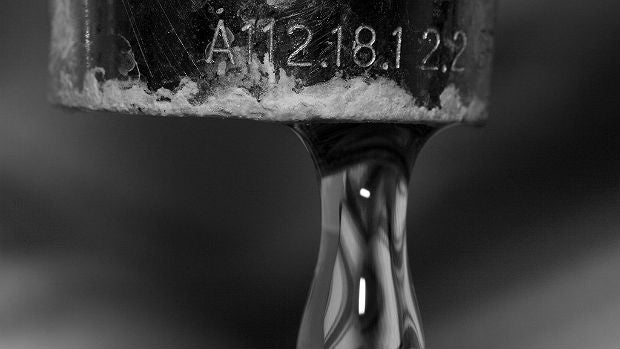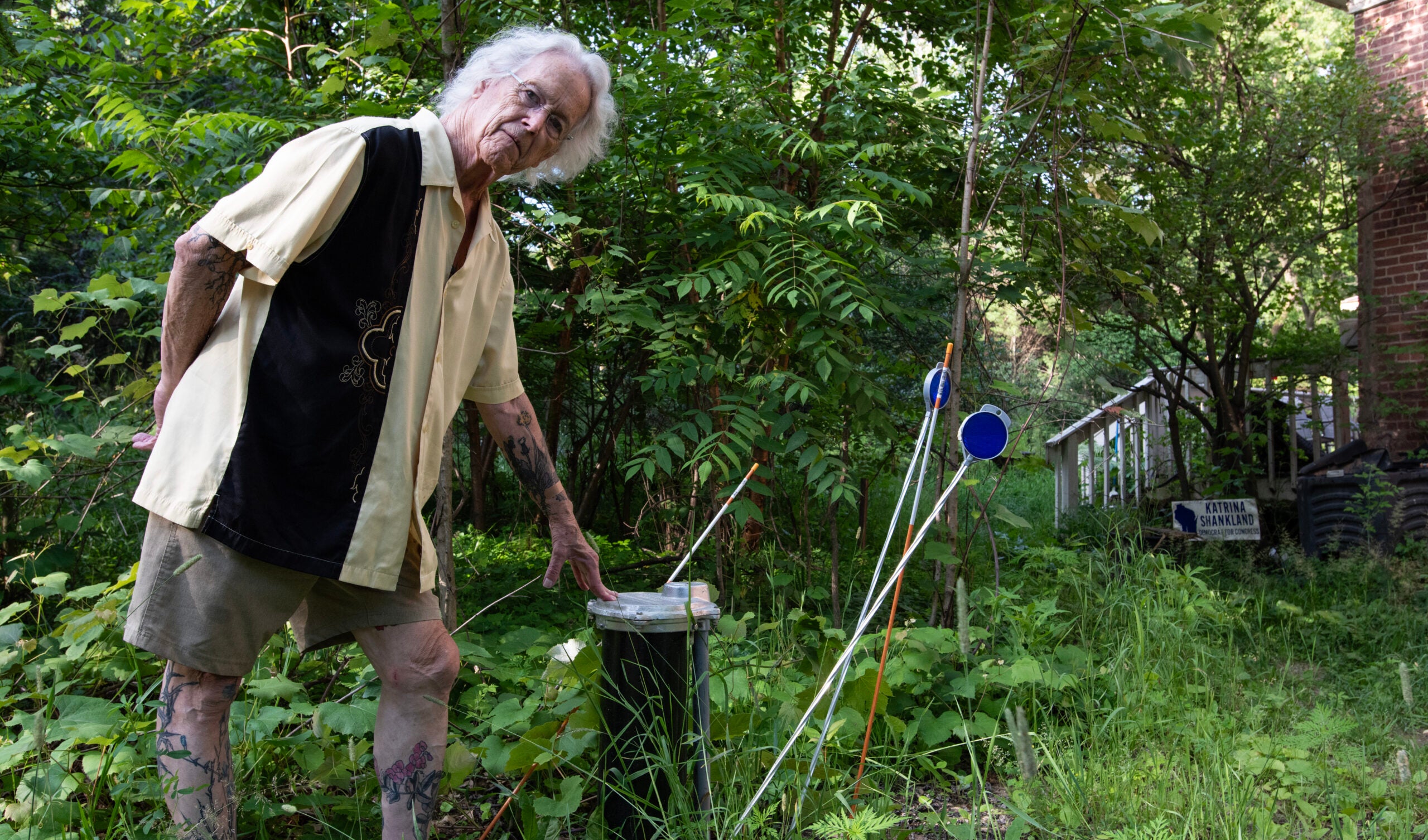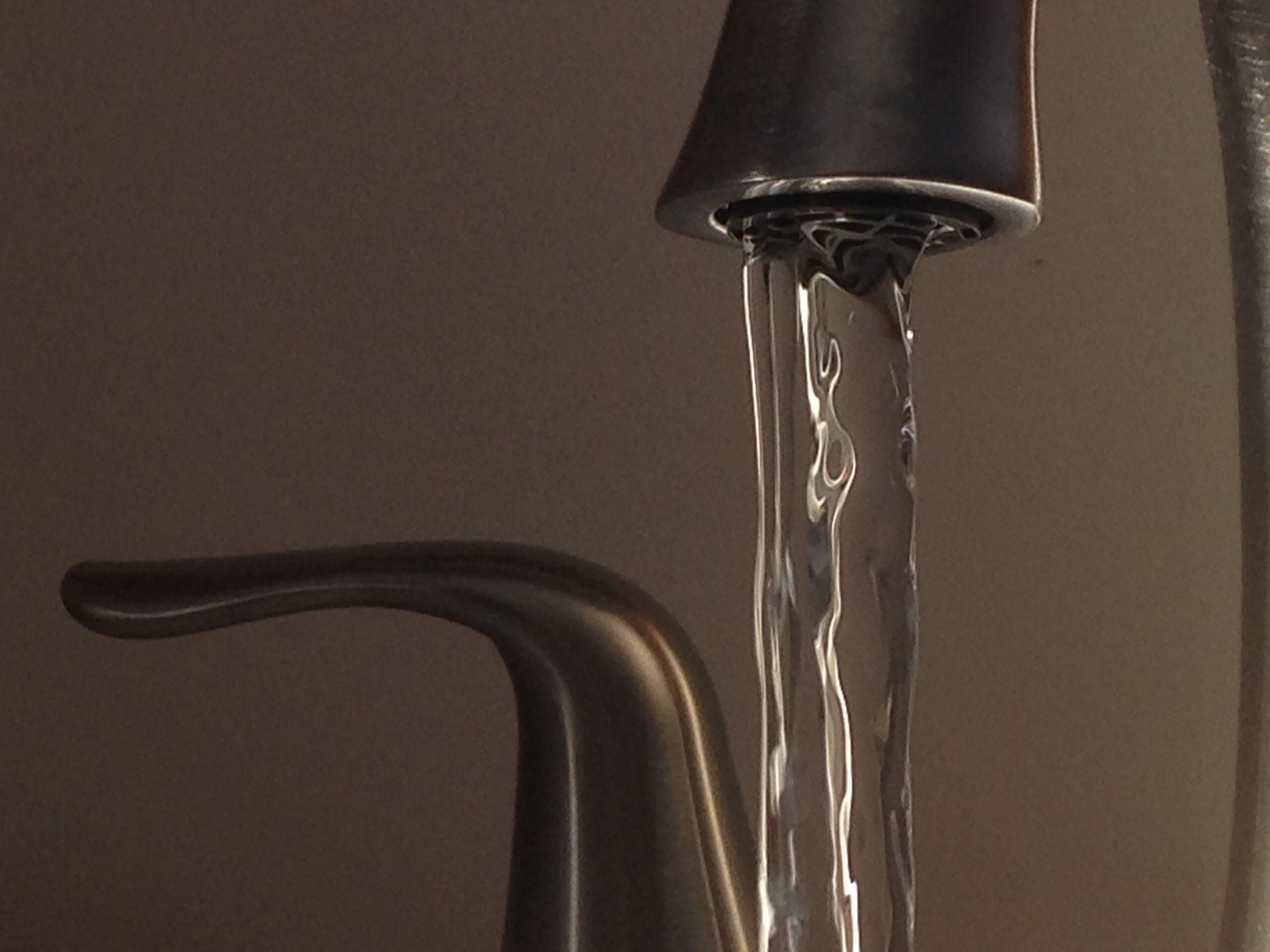Although nearly 900,000 Wisconsin households rely on private wells for drinking water, its quality isn’t a matter of certainty.
In fact, the roughly 40 percent of households that use private wells face many challenges — for reasons natural and related to human activities — that can threaten their drinking water quality. In some areas of the state, the structure of bedrock can increase exposure of groundwater to multiple elements that can harm human health. Throughout the state, agricultural activities can lead to concentrations of nitrate and pesticides in groundwater around the state, while disposal and treatment of animal and human waste can introduce bacteria and viruses to wells.
“In the case of groundwater, most human problems have developed over decades, and now we’re starting to see the consequences of that,” said Kevin Masarik, a groundwater education specialist at the Center for Watershed Science and Education at the University of Wisconsin-Stevens Point.
News with a little more humanity
WPR’s “Wisconsin Today” newsletter keeps you connected to the state you love without feeling overwhelmed. No paywall. No agenda. No corporate filter.
Properties with wells can range in size from half-acre subdivisions to more traditional rural locations with one house on a 15- or 40-acre parcel. But these wells are so spread out that what happens within even one-quarter mile can affect the water in each differently, meaning that broad community solutions are not available, Masarik noted.
However, individual well owners, however, can track the quality of their water by testing it themselves. Due to the ways certain bacteria and nitrate can affect human health, tests for those two contaminants are the most important. The state of Wisconsin requires testing for bacteria and nitrate when wells are constructed, but ongoing assessments are not mandated.
One broad set of tests are for coliform bacteria, which are indicator organisms. This means that if well water tests positive for them, other contaminants could also be getting into the well. A positive test for E. coli, a coliform bacteria that can make people sick, means fecal contamination is present in the well. The Wisconsin Department of Natural Resources, the Wisconsin State Laboratory of Hygiene and the Wisconsin Water Well Association each recommend annual testing for bacteria.
Well water should also be tested for nitrate, particularly if infants or women of childbearing age are drinking it. Nitrates can cause “blue baby syndrome” in infants under 6 months of age, which can lead to coma or death. In pregnant women, nitrates can also reduce the amount of oxygen available to the growing fetus.
Well owners have a variety of possibilities for getting their groundwater tested. Options include private laboratories certified by the state to perform different tests for different contaminants. Not all private labs perform the same tests, though, and each needs to be certified for the type of analysis it offers. Additional options include the Water and Environmental Analysis Lab at the Center for Watershed Science and Education, the Wisconsin State Laboratory of Hygiene, and 21 county health departments.
“You are your own utility manager with all of the responsibility that goes along with that,” Masarik said. “If you are not doing the testing, not doing simple things with your well, there is no one going to do those things for you.”
Any time well water changes in appearance, taste or smell, it should be tested. At the Wisconsin State Laboratory of Hygiene, well owners sometimes tell staff they haven’t tested their water because it tastes, looks and smells fine, so they don’t think there is any reason to check its quality.
“However, water can taste and look OK and still be contaminated,” said David Webb, the lab’s assistant director and environmental health division director.
In most areas of Wisconsin, the presence of bacteria usually indicates a physical problem with the well, Masarik said. For example, a loose cap can allow unfiltered surface water inside and lead to contamination.
Meanwhile, nitrate is the most common chemical contaminant in Wisconsin groundwater. The DNR started requiring that newly constructed wells be tested for nitrate when the state revised the private well code in October 2014, said Liesa Lehmann, private water section chief for the agency’s Bureau of Drinking Water and Groundwater.
The occurrence of nitrate relates to land use, mostly due to the spreading of fertilizer, Masarik explained. Nitrate can make its way into wells serving unsewered housing developments, even those with lots of 2 or fewer acres that aren’t necessarily near farms. A recent study of well water in Dane County found that the percentage of nitrate-contaminated wells used by homes, schools, churches, restaurants and bars has declined in the last 30 years, but recommends owners continue testing for nitrate.
The presence of nitrate suggests the water is more likely to contain pesticides. A first step is a diaminochlorotriazine (or “DACT”) test to detect agricultural chemicals used in herbicides. Wells within one quarter mile of cornfields should be tested for triazines, a class of herbicides that include atrazine, simazine and cyanazine. If the water sample exceeds the recommended standard, well owners should follow up with a more expensive test for nitrogen and phosphorus-containing pesticides.
If well owners have never had their wells tested for contaminants like arsenic, then a test for metals, most of which can cause health problems, should also be considered. Wells should be tested for arsenic at last once every five years, when the water changes color or stains fixtures, or when well levels change, according to the DNR.
Beyond requiring new wells be tested for bacteria and nitrate, different circumstances in different areas of the state may mean testing is required, Lehmann said. If an owner is having work done on a well, she or he should hire licensed contractor and confirm what kind of testing is required. In addition, if a piece of property is being sold and the buyer or seller has a well inspected, then testing must be done.
Getting Water Tested And Interpreting Results
Determining what to test for in drinking water is complicated. Well owners may know they should test their water, but don’t necessarily move forward if they don’t know what to look for or where to send samples.
Kevin Masarik, of the Center for Watershed Science and Education, discussed the need for testing water sourced from private wells in a June 2015 interview on WPR’s “The Larry Meiller Show.”
Listen to Kevin Masarik discuss well water testing.
The DNR provides information on testing, wells and drinking water. One DNR guide oriented toward well owners provides information about contaminants and labs (including a list of those specifically certified to test for coliform bacteria and a database that lets users search by contaminant and geography. The other DNR guide is targeted largely toward the laboratories themselves and provides information about the certification process. It offers a series of lists with information about labs accredited to conduct water testing. The DNR certifies laboratories that test for many drinking water contaminants, including nitrate, metals, pesticides and herbicides, while the Wisconsin Department of Agriculture, Trade and Consumer Protection certifies those testing for bacteria.
Well owners may find talking through their specific situation to be helpful, especially if they haven’t tested their water in years, said David Webb of the State Laboratory of Hygiene. He explained that well owners can call this lab’s customer service staff with questions.
“We can explain what tests are available, their pros and cons, and the well owners make the final decision about what tests to order,” he said “If needed, our customer service staff will also connect well owners with scientific staff to answer questions about test results and possible follow-up actions.”
The State Laboratory of Hygiene offers Wisconsin residents an array of tests, including a homeowner package with screens for total coliform bacteria, nitrate, nitrite, fluoride, metals, hardness, volatile organic chemicals and atrazine. Another package of tests helps consumers meet federal requirements for real estate transactions that involve certain kinds of loans.
The lab also works with local health departments and state agencies, including the DNR and the Department of Health Services. “If there is some type of follow-up those agencies can help well owners with, we can help put them in touch,” Webb said.
No matter where well owners get their water tested, Webb recommended they ask several questions.
- Is the lab certified to perform the desired type of testing?
- What types of tests should I consider given my well’s specific situation?
- How do I get a test kit? How do I get the water sample to the lab?
- Are there any time limits between when I collect the water sample and when it needs to arrive at the lab for testing? (For bacteria testing, there is a 30-hour limit between when the sample is collected and when it must be tested, so well owners should have this testing conducted at a certified lab that is physically close.)
- What will it cost and when will I get my test results back?
- If I have questions about the test results, who can I call for answers?
- If my well is contaminated and I need to fix it, who can guide to me to resources for help?
The Water and Environmental Analysis Lab also offers multiple testing options. Its homeowner package includes tests for bacteria and nitrate, and the lab offers a metals package (which covers elements like arsenic and lead) and a diaminochlorotriazine (or “DACT”) test to detect agricultural chemicals used in herbicides.
Working At The Community Level
Staff at the Water and Environmental Analysis Lab can answer questions from people who use private wells for their drinking water. This lab is part of the Center for Watershed Science and Education, a partnership of the UW-Stevens Point College of Natural Resources and UW-Extension.
In addition, the Water and Environmental Analysis Lab’s community educational drinking water programs help well owners learn the basics of well construction, where their groundwater comes from, how to test it and methods for improving its quality. Kevin Masarik works with rural county and town governments around the state to educate well owners about drinking water quality through regular testing.
Counties take different approaches depending on their local circumstances and practices. Some municipalities offer water testing proactively, while others respond to emerging concerns.
In some areas, the local Extension educator coordinates with municipal officials and residents to organize and promote a voluntary water-testing education program, which includes distributing instructions and bottles for collecting and submitting samples. This process culminates with a community meeting in which Masarik discusses general results and local trends, and answers questions from residents. He facilitates more than a dozen of these meetings every year, with an intent to help well owners understand their own situations and that safe drinking water is a shared concern.
“If a water sample indicates a problem with the water quality, it is in a homeowner’s best interest to find a long-term solution to the problem, however corrective action is not required by any government regulation,” Masarik said, “nor will a well be shut down because of a water test.”
Green County’s Extension office coordinates a regular drinking water testing program in partnership with townships for educational purposes. Its next testing program will begin in March 2016. Participants will have three days to pick up bottles to collect samples. They must take the sample and deliver it to the Extension office the same specified day. These samples will be refrigerated overnight, and delivered to the Water and Environmental Analysis Lab the next day. All samples must be processed within 30 hours after they are taken. Individual results are not reported to any regulatory agency.
According to UW-Extension Green County community resource development educator Victoria Solomon, this process is easier for well owners because they don’t have to figure out exactly what they need to do, where to send the sample or how to interpret the results on their own. “Water testing is a service that the county wants to make sure is provided.”
Participants receive results in two to three weeks, unless a serious problem is found, in which case Extension staff makes immediate contact to answer questions and offer suggestions, Solomon said. When some Green County samples were detected to have E. coli, the lab informed the homeowners right away, a community resource development educator with UW-Extension.
With one of the oldest county water testing programs in the state, Fond du Lac County’s Extension office works on a different model. Diana Tscheschlok, an educator with the program, organizes township by township, with a member of the selected town board communicating with residents to explain why tests are important and to offer an opportunity to participate. Bacteria and nitrate are of concern in the eastern part of the county, which is on the edge of the Niagara Escarpment, where limited topsoil means cracks in the bedrock make it easier for both contaminant types to make their way into groundwater.
Residents might become interested or concerned about their drinking water quality because of a development proposal.
“We get questions all the time about a community wanting to know whether groundwater quality is better or worse than 10 years ago,” Masarik said. “Often there is no data to tell what it was in the past. They realize no one is collecting information.”
For example, Bayfield County set a moratorium on licensing livestock facilities in February 2015 so it could study the effects of new concentrated animal feeding operations on local groundwater. As part of that project, the county collected well water samples for testing from seven communities surrounding what would be the largest hog farm in the state, mostly in the town of Eileen. Nitrate levels in those Bayfield County samples were low compared to other wells across the state, Masarik said.
“One individual well tells you very little about water quality in a given area,” Masarik said. “When you start looking at hundreds of results in a small area, you can identify potential concerns.”
After well water tests results are determined as part of community educational drinking water programs, Masarik and local Extension educators discuss overall findings and answer questions in the community meetings. Depending on the data that come back, homeowners have different options for addressing any findings that are cause for concern, which Masarik can explain. In one case, he connected a homeowner to DATCP to get help conducting a more specific test.
The county-based testing program and especially the meetings give residents a wider picture of their community and bring more attention to the issue of safe drinking water. “People like to see not only their tests, but other people’s tests,” Solomon said.
Specific results are kept private but aggregate maps help highlight patterns. At the meetings, Masarik goes point by point through the findings, covering hardness of water, nitrate and other contaminants, and more information.
Through its county-level community testing and education programs, the Center for Watershed Science and Education has developed a series of maps and improved understanding overall water quality in the state. The Wisconsin Well Water Viewer sources data primarily from the center, DATCP and the DNR. This tool offers a localized level of detail not available in a lot of states.
“We have been able to inform a community where problems exist so they can help residents understand what to do to protect their families,” Masarik said.
On the other hand, residents may learn that their water quality is as good as or better than bottled water. “The majority of wells are producing water that meets or exceeds all drinking water standards,” Masarik said.
This report was produced in a partnership between Wisconsin Public Radio, PBS Wisconsin and the University of Wisconsin Cooperative Extension. @ Copyright 2025, Board of Regents of the University of Wisconsin System and Wisconsin Educational Communications Board.






